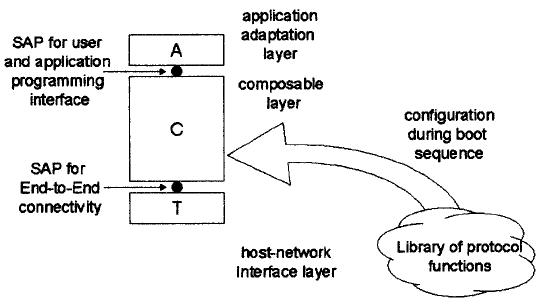
Isfahan University of Technology
Protocols and Network Aspects of SDR
H. Narimani
course project spring 2007
| |
| Home |
| Refrences |
| Relevant Sites and Projects |
| About Us |
| Composable Protocols | |
Composable protocols represent another alternative approach. The functionality of protocols
and complete protocol stacks can be split into single protocol functions, and a pool of these functions may then be used to construct customized protocol stacks during boot time. Various
projects have been initiated to explore and implement this principle of composable protocols,
|
|
 |
|
While layers A and T, the adaptation layers, are dependent on the applications and underlying
transport mechanisms (e.g. ATM, LAN, MAC, etc.), respectively, layer C is the configurable/
composable protocol layer. It is comprised of agglomerated granular protocol building
blocks, each defining a single protocol task.The DaCaPo framework uses four cooperating entities to control messaging between these
Although developed to implement complete protocol stacks, DaCaPo tackles reconfiguration and customization within protocols during implementation/boot time. |
|
see also : |
|

